
Travelpixs / shutterstock.com
Since the beginning of the pandemic, the ACR’s Committee on Training and Workforce (COTW) has been interested in better understanding how fellowship recruitment is affected by virtual recruitment from the perspectives of both program directors and trainees.
This past year, the COTW conducted a survey study to gain the perspective of program directors.1 The Rheumatology Program Director Virtual Recruitment Survey in 2020 demonstrated concerns of most rheumatology program directors about increased challenges in assessing applicants’ levels of interest, fit, interpersonal skills and professionalism.
Studies conducted in other specialties, including orthopedics, pulmonology and infectious diseases, reported applicant concerns about their ability to assess programs’ culture and present themselves in a virtual format, and a preference for optional in-person and virtual interviews in the future.2-4
Here, we present the results of a nationwide survey of rheumatology fellows conducted by the COTW regarding the virtual recruitment process from the perspective of rheumatology fellows as a follow-up to the Program Director Survey. Understanding these results can assist in planning for the next recruitment season.
The Survey
The survey included questions on demographics, pre-interview, interview day, match, post-match experiences and future considerations. It was distributed via email to all the matched adult, pediatric and medicine-pediatrics rheumatology fellows on Feb. 28, 2022, and closed on March 18. It was distributed to fellows of all years of training to evaluate the perspectives of first-year fellows (who were interviewed in a virtual format) and senior fellows (who interviewed in person prior to the pandemic), allowing their experiences to be compared.
Responses were received from 159 of 333 (47.7%) first-year and 191 of 458 (41.7%) senior fellows, which was similar to the response rate from the program director survey the year prior. The survey results were presented at the Educators Conference during the 2022 ACR Education Exchange on April 28.
Respondents
Most respondents were adult rheumatology fellows (n=137, 86%) followed by pediatrics (n=16, 10%) and medicine-pediatrics rheumatology fellows (n=6, 4%). Respondents included U.S. MDs (44%), DOs (18%), U.S.-international medical graduates (IMGs; 14%), and non-U.S. IMGs (23%). Approximately 60% of the respondents self-identified as a woman.
Pre-Interview Experience & Preferences
Almost all the respondents used program websites and found them helpful to obtain information about the programs. Nearly half of the fellows reported never using social media platforms to get information about the programs. Among those who used social media for this purpose, most preferred Twitter, followed by Facebook.
Nearly half of the fellows reported applying to a greater number of programs and to more distant programs than they would have if interviews had been conducted in-person, while the remaining fellows reported applying to a similar number of programs despite the virtual format.
Interview Day Experience
The majority of fellows had three to five interviews per program, which was concordant with their preferences. Most fellows preferred one-on-one interviews to last 20–30 minutes. Most fellows (57%) reported interview days that lasted six to eight hours; however, 75% of fellows preferred interview days that were shorter, lasting three to five hours.
Most fellows reported that all of their questions were answered by the end of the interview day. Mixed experiences were observed with regard to fellows’ levels of satisfaction with their ability to assess programs’ cultures in the virtual format, but most fellows were satisfied with their ability to present themselves in the virtual format.
Match Experience
Nearly half of the first-year fellows matched in the same geographic region (as defined in the ACR workforce study) where they completed residency training, which was comparable to senior fellows.5 Fellowship programs met the expectations of the majority of first-year fellows who interviewed virtually with regard to program culture, clinical experience, research opportunities and physical environment, which was again comparable to the experiences of the senior fellows who had interviewed in person.
Future Considerations
Approximately 40% of the first-year fellows preferred flexibility to choose in-person or virtual interview format, while some preferred in-person only (20%), virtual only (20%) or virtual followed by optional in-person visit (20%). Half of the senior fellows preferred in-person only, which was followed by flexibility to choose in-person or virtual (33%). The reasons for preferring virtual interviews included difficulty scheduling interviews during training, financial concerns, time zone issues, concern for COVID-19 infection and disruption in childcare.
Discussion
Results of this survey highlight that the 2020 virtual interview season was a positive experience overall for most matched rheumatology fellows, with programs meeting fellows’ expectations despite variable perceptions regarding the ability to assess a program’s culture in the virtual interview format.
Despite half of the fellows interviewing at more distant places as a result of the virtual format, first-year fellows matched in the same region where they completed residency at similar rates to the senior fellows. Concordant with the results of the Program Director Survey, which reported a higher volume of applications received by one-third of the programs, half of the fellows reported applying to more programs due to virtual format.
If this trend were to continue, it would create challenges for fellowship programs related to the increase in the number of applications per fellowship spot. Further, the survey results suggest that applying to more distant programs did not result in applicants matching at more distant programs.
Based on the 2020 program director survey, most rheumatology programs had generated new online resources for applicants; this survey highlights that most fellows found the program websites to be helpful. Interestingly, social media presence was emphasized by some programs in the Program Director Survey, but this survey found that half of the fellows had never used social media platforms to obtain information about the programs with variable use by the remaining respondents. Therefore, although social media, particularly Twitter, may be useful for some applicants, it is not a primary source of information for applicants during the recruitment process.
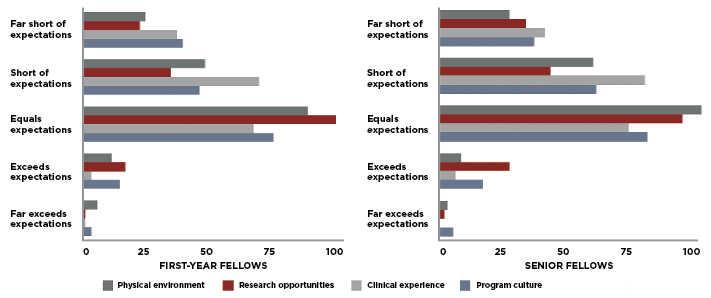
Figure 1: Trainee Expectations Regarding Matched Fellowship Programs Based on Their Impression from the Interview Day
Virtual Interviews Work
The majority of applicants perceived virtual interviews to meet, exceed or far exceed expectations related to program culture, clinical experience, research opportunities and physical environment. When compared to senior fellows who interviewed in-person the year prior, the perceptions were quite similar regarding expectations in all categories (see Figure 1, above). This may not seem surprising because information is likely available to applicants in similar ways during virtual and in-person interviews on program websites or by direct communication on interview day, with the exception of tours of the physical environment. This may help explain why most fellows preferred flexibility in choosing between virtual and in-person interviews in the future, and is important to emphasize because it highlights the effectiveness of the virtual interview process.
Although social media, particularly Twitter, may be useful for some applicants, it is not a primary source of information for applicants during the recruitment process.
Fellows Prefer Shorter Interview Days
Most fellows had interview days of six to eight hours; however, a vast majority preferred shorter interview days, lasting three to five hours in total. Desire for shorter interview days by fellows is not surprising and could be due to difficulty scheduling interviews during training, concerns about their virtual presentation due to screen fatigue, competing responsibilities, such as disruption of childcare due to the pandemic, and other reasons.
Nearly all fellows reported that all of their questions were answered by the end of the interview day and that they were able to gauge the program’s culture enough for programs to meet their expectations after the match.
It is unclear whether shorter interview days could threaten the overall positive experience for fellows by decreasing a program’s ability to assess the applicants’ overall fit for the program and answer all of an applicants’ questions in the virtual format.
Considering these factors, creative ways to shorten interview days to three to five hours while preserving the quality time spent with applicants should be sought.
Fellows Prefer Interview Format Flexibility
First-year fellows expressed a preference for flexibility to choose between virtual and in-person interviews in the future due to a variety of concerns. Although flexibility to choose between formats could be attractive by removing potential cost barriers and allowing more flexibility in scheduling, there are potential drawbacks to this approach, including the potential bias of programs for applicants who had interviewed in-person compared to applicants who interviewed virtually. This concern for potential bias could increase stress on applicants who must decide if they should attend in person or virtual for every interview invitation, and lead to concern about being perceived as less interested if they chose to interview virtually even when the decision may be due to other constraints.
Limitations
One of the limitations of this study was that it included only successfully matched applicants and was answered by 41% of the current fellows. Therefore, the results may not fully reflect the experiences and preferences of the applicants who did not match into a rheumatology fellowship or those who did successfully match but chose not to answer the survey. However, the distribution of the respondents in terms of gender and program (adult vs. pediatrics) does represent a reasonable approximation of the current rheumatology fellows in the U.S.
In Sum
For rheumatology fellowship programs considering continuing to utilize the virtual interview format in the future, these data can help guide the interview process.
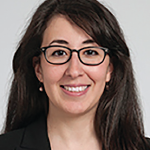 Didem Saygin, MD (@DidemSayginMD), is a second-year rheumatology fellow at the University of Chicago.
Didem Saygin, MD (@DidemSayginMD), is a second-year rheumatology fellow at the University of Chicago.
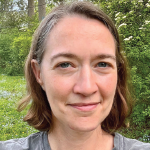 Bethany Marston, MD (@BethMarstonMD), is an associate professor of pediatrics and medicine, the Pediatric Rheumatology Division director and the director of the Rheumatology Fellowship Program at the University of Rochester School of Medicine, New York.
Bethany Marston, MD (@BethMarstonMD), is an associate professor of pediatrics and medicine, the Pediatric Rheumatology Division director and the director of the Rheumatology Fellowship Program at the University of Rochester School of Medicine, New York.
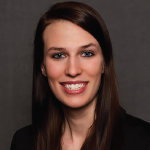 Nina Couette, DO (@RheumDr_Nina), is a second-year rheumatology fellow at The Ohio State University, Columbus.
Nina Couette, DO (@RheumDr_Nina), is a second-year rheumatology fellow at The Ohio State University, Columbus.
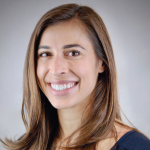 Sara Patrizi, DO, is a second-year pediatric rheumatology fellow at Lucile Packard Children’s Hospital, Stanford University, Palo Alto, Calif.
Sara Patrizi, DO, is a second-year pediatric rheumatology fellow at Lucile Packard Children’s Hospital, Stanford University, Palo Alto, Calif.
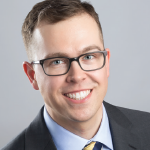 Adam Kilian, MD (@KilianMD), is an assistant professor of medicine and associate program director of the Adult Rheumatology Fellowship Program at the Saint Louis University School of Medicine, Missouri.
Adam Kilian, MD (@KilianMD), is an assistant professor of medicine and associate program director of the Adult Rheumatology Fellowship Program at the Saint Louis University School of Medicine, Missouri.
References
- Kilian A, Marston B. Virtual recruitment in 2020 and beyond: Rheumatology Fellowship Program Directors Survey results. The Rheumatologist. 2021 Jul 15;15(7).
- Yong TM, Davis ME, Coe MP, et al. Recommendations on the use of virtual interviews in the orthopedic trauma fellowship match: A survey of applicant and fellowship director perspectives. OTA Int. 2021 Apr 21;4(2):e130.
- Allam JS, Burkart K, Çoruhet B, et al. The virtual interview experience: Perspectives of pulmonary and critical care fellowship applicants. ATS Sch. 2022 Jan 6;3(1):9–12.
- Rockney D, et al. Virtual recruitment is here to stay: A survey of ID fellowship program directors and matched applicants regarding their 2020 virtual recruitment experiences. Open Forum Infect Dis. 2021 Aug 2;8(8):ofab383.
- Battafarano D, et al. 2015 American College of Rheumatology Workforce Study: Supply and demand projections of adult rheumatology workforce, 2015–2030. Arthritis Care Res (Hoboken). 2018 Apr;70(4):617–626.


